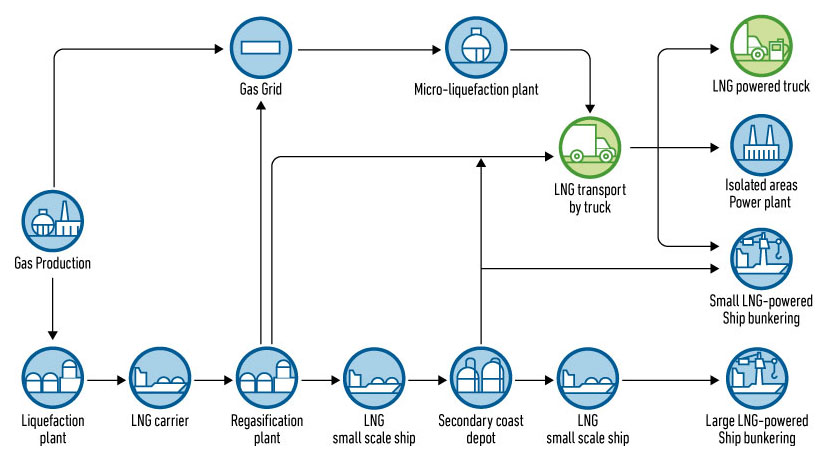Natural gas for sustainable mobility

The transport sector accounted for about 24% of global carbon dioxide emissions (CO2) in 2015, and remains a leading source of air pollutants with powerful impacts on health. It is responsible for over half of all energy-related nitrogen oxide emissions (NOX) and is an important source of primary particulate matter (PM).
Road transport is by far the largest source of the sector’s NOX and primary PM2.5 emissions, while marine transport accounts for the largest share of sulphur dioxide emissions (SO2).
Natural gas allows a series of applications in the transport sector that can bring tangible environmental benefits. Using Compressed Natural Gas (CNG) or Liquefied Natural Gas (LNG) as an alternative fuel for light and heavy vehicles contributes to the reduction of pollutant emissions. Compared to other fossil fuels, CNG could lead to significant CO2 emissions reductions and to almost cancelation of nitrogen emissions and particulate matter. LNG is an economical and efficient solution with high standards of environmental compatibility, as it is subjected to treatments that eliminate particulate matter and SOX and almost remove NOX.
Buoyed by a well-established technology, natural gas consumption in the global transport sector has been growing by 4.4% per year since 2010. The use of CNG and LNG may grow more significantly, though it will depend on further development of the distribution infrastructures (new and more evenly spread CNG and LNG refuelling stations, adaptation of existing regasification terminals and construction of LNG coastal deposits).
- DNV GL, LNG as ship fuel;
- IEA (International Energy Agency), CO2 Emissions from Fuel Combustion 2017; Energy and Air Pollution: World Energy Outlook 2016 Special Report; Online Statistics [Accessed 24 November 2017] LNG World Shipping May/June 2017;
- NGV Global, Online Statistics [Accessed 21 November 2017];
- SNAM, Global Gas Report 2017; Natural gas for decarbonisation - 2016 Sustainability Report;
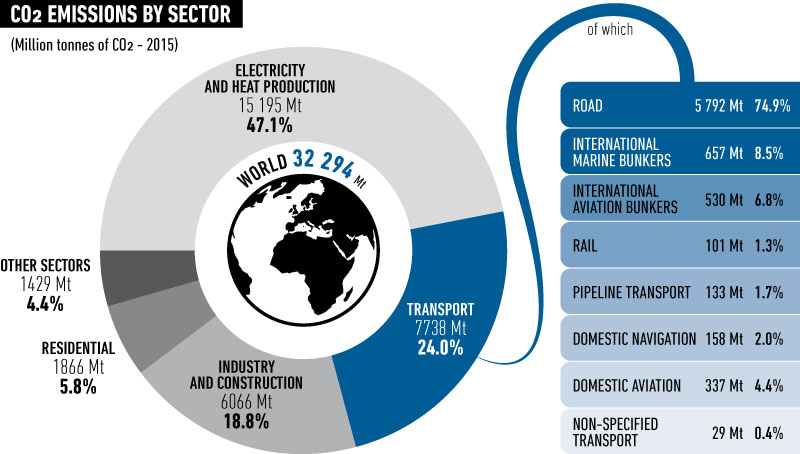
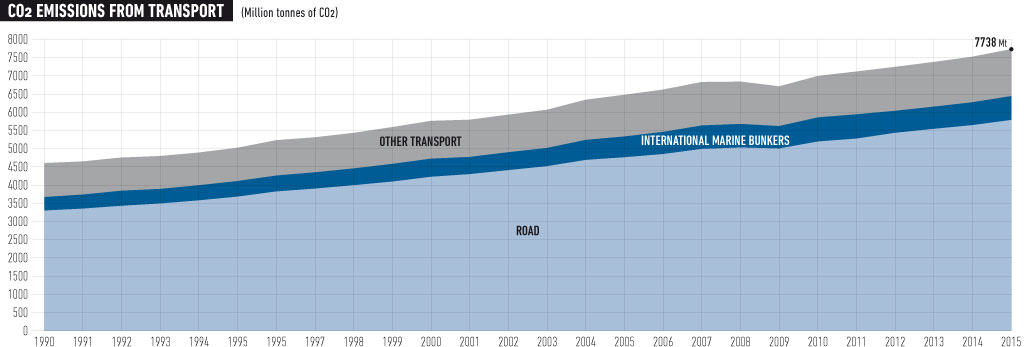
The use of methane instead of traditional fuels (petrol and diesel) reduces CO2 (carbon dioxide) emissions by approximately 40%.
This gas is responsible for the “greenhouse effect” and global warming, approximately 94% of NOx (nitrogen oxides), which cause “acid raid”, and as much as 95% of PM (particulate matter) emissions, which are most harmful to our health.
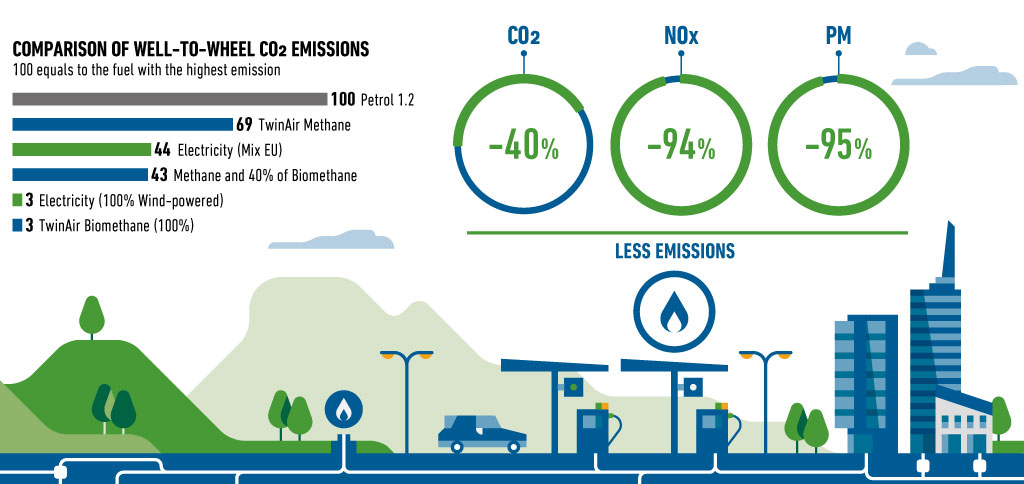
Thanks to its new uses, Liquefied Natural Gas (LNG) can contribute to the reduction of pollutant emissions for both sea and road transport.
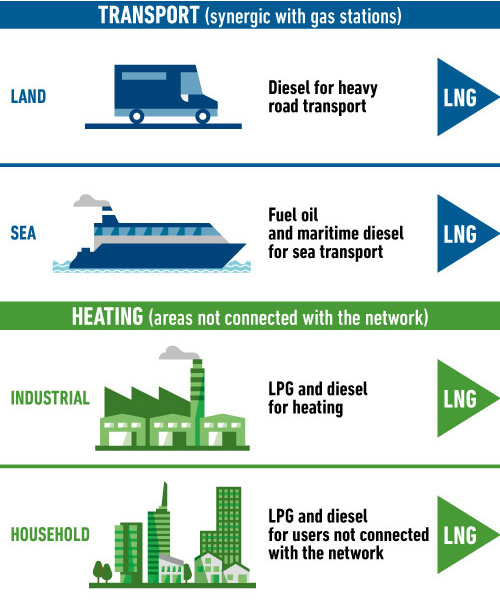
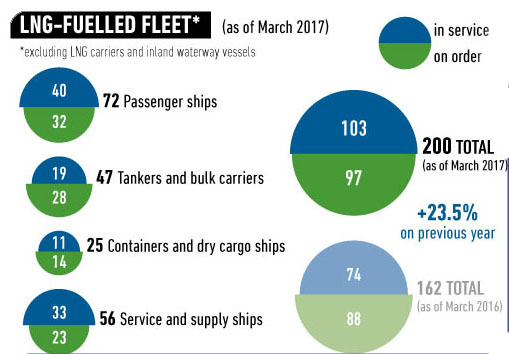
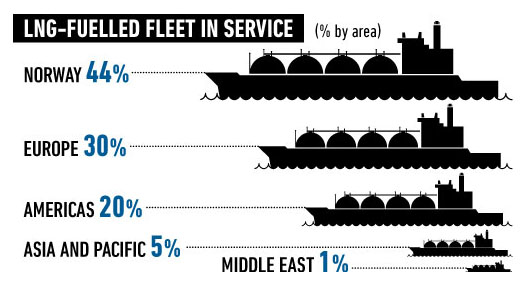
A new frontier for the procurement of Liquefied Natural Gas (LNG) is represented by the so-called “Small-Scale LNG” (SSLNG). Small gas tankers known as “lighters” can take the product from regasification terminals and directly refuel ships that run on LNG or take the product to coastal depots, to then be sorted by specially equipped lorries. These lorries can be directly refuelled with LNG from a regasification plant and the liquid gas then transported to the refuelling stations. The stations then refuel heavy land vehicles, lorries and coaches. For in-land production, Small-Scale LNG, both as secondary cost depot and micro-liquefaction plants, can be developed to support off-grid uses, such as for small power generators and LNG for transport.
